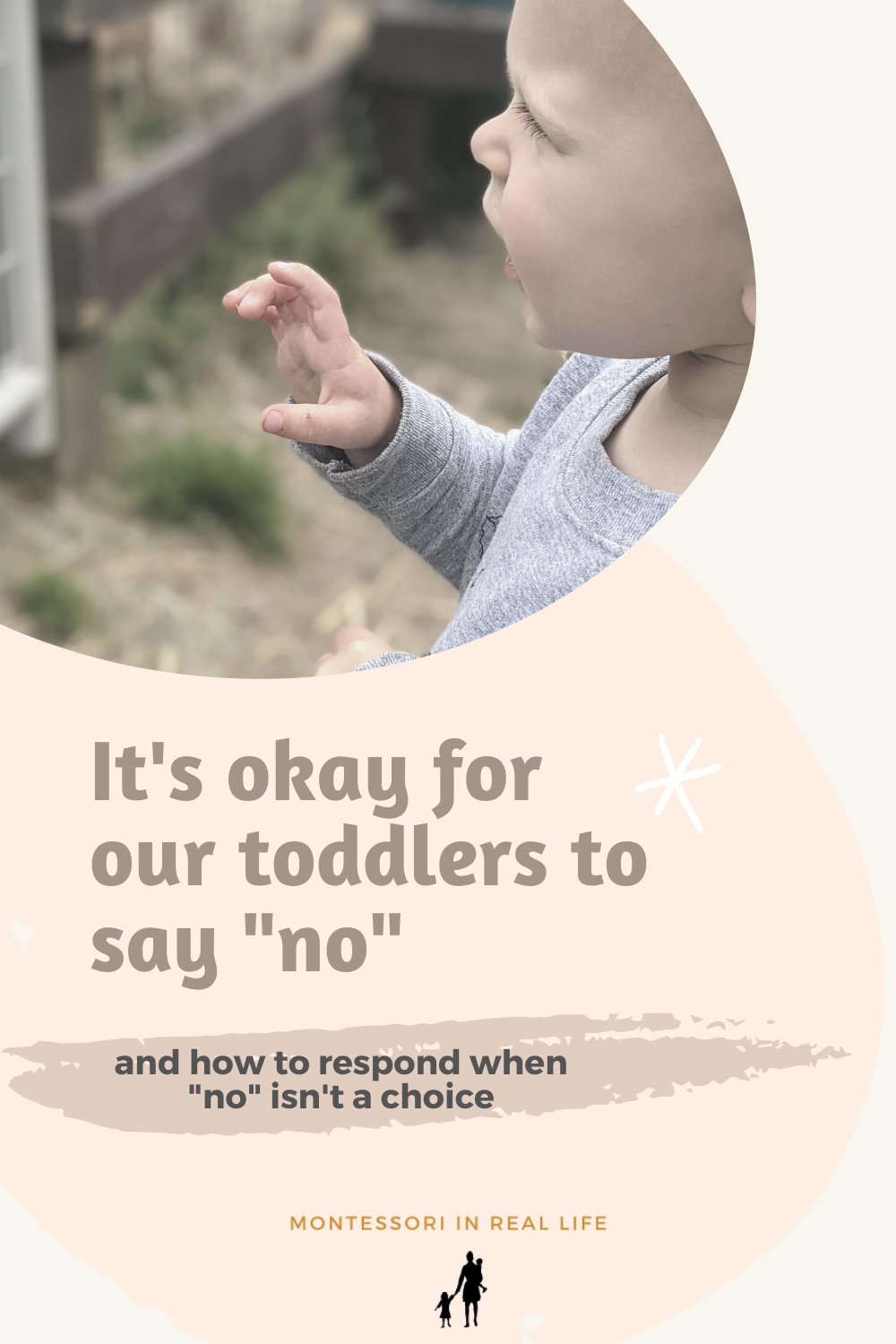It's okay for our toddlers to say "no"
Montessori in Real Life
Right around the age of two, “no” becomes a favorite word. “Are you ready to put on your shoes now?” “No.” “Would you like me to help you?” “No.” “It’s time to get in the car.” “No.” “Do you want to go on a super fun adventure that involves snacks and playing in water?!” “No!” Does this sound familiar? ;)
When toddlers say no, they are learning how to exert their will in a meaningful way for the first time. They are realizing they are their own unique person with their own thoughts and opinions. They are letting us know loud and clear that they are their own person with a strong will and personality.
When we think about the kind of human we want to raise, this is it! We want our children to hold boundaries, to stand up for themselves, and to be strong and independent. Why does this feel so hard at age two?
It’s all about balance. We want to give our toddlers plenty of opportunities to exert their will, to feel independent and capable, and to set their personal boundaries. We also want to set clear and loving limits that they are able to follow. How do we do this?
Make Transitions Fun
Transitions are often the time we hear the most “no’s” from our toddlers. This is understandable: we are asking them to stop one fun activity and quickly make the switch to something else, often less exciting. One way to prevent our toddlers from saying “no” is to make transitions smoother and more fun in the first place.
Following a daily rhythm and knowing each step of their routines can give them comfort in knowing what comes next and feeling comfortable with the daily transitions. Being playful can lighten up the mood and slow us down in transitions. Examples of playful transitions: “Let’s hop like bunnies to the car!” or “Time to find your shoes! Where are they hiding?”
Offer Age-Appropriate Choices
Choices are another way to help our day flow more smoothly and to give our toddlers a sense of autonomy and confidence. There are lots of choices we can offer our toddlers throughout the day. Choices are appropriate for toddlers when both answers are viable options. Examples of toddler choices might include:
“Would you like blueberries or bananas with your oatmeal this morning?”
“Which shoes would you like to wear, red or blue?”
“Do you want to walk or ride your bike?”
“Would you like a hug or a high five?”
While choices are incredibly powerful for toddlers, there are also times when choices aren’t appropriate. While it is kind to offer limited choices rather than boss our toddlers around, it isn’t kind to offer a choice when there really isn’t one.
Avoid giving options when there really isn’t a choice
Pause before asking a question or offering a choice. Consider if you are really okay with either answer or the option you are about to give. For example, when you ask “Are you ready for bedtime?” is “no” really an acceptable option?
If there is only one appopriate response, do not pose it as a question, simply state what you want. Rather than ask, “Are you ready for bed?” you could state, “After this book, we are going to start bathtime.”
You could also offer two choices that both result in starting bedtime. For example, “Would you like to brush teeth or put on pajamas first?”
When they still say “No”
There are plenty of times when toddlers still say “no” to the choices or statements we offer. These moments can feel so frustrating, especially when our toddlers say this on repeat.
When S responds with “no”, the first thing I ask myself is “Is this something that really must be done now?” and “Why?” Oftentimes I can give S a bit more time and with that extra time he is able to finish what he is doing, process what I said, and feels ready to follow my request. Other times he is saying “no” to joining in something that he just doesn’t feel comfortable doing, and it’s more than okay for him to set those boundaries and opt out.
If “no” really isn’t an option, I validate his feelings and help him to follow my directions. If he is tired, hungry, or having an off day, I will often acknowledge what he has said and repeat myself once before helping him. For example, if he doesn’t want to leave the park: “You don’t want to leave the playground and go home. It’s hard to leave. It’s time to go to the car.” I often then need to gently help his body: “I’m going to pick you up now and carry you to the car.”
What we can control
While we can’t control how our toddler responds to us, we can control our response to them. When we acknowledge their wants and feelings, they feel seen. When we respect their boundaries, they feel safe. When we stay calm and confident, they feel secure with us. When we find a healthy balance of giving our toddlers autonomy and loving limits, we both feel better.





























